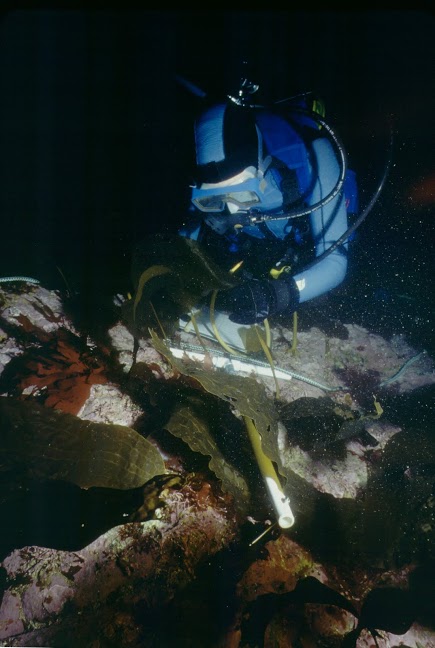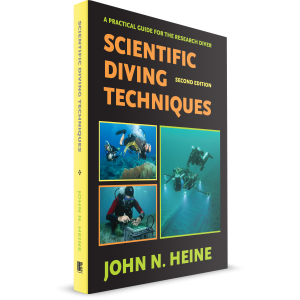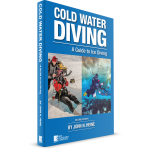DEPTH Blog
This is What Scientific Diving Looks Like
In the below image a scientific diver works in a deep kelp bed in central California. She is measuring the percent cover of various marine algae as a part of her Master’s thesis.
To learn more about this, and many other techniques, pick up a copy of Scientific Diving Techniques: A Practical Guide for the Research Diver, by John N. Heine.

ABOUT THE BOOK
This updated and revised second edition of John Heine's Scientific Diving Techniques covers the details of research methods underwater.  Included are general scientific diving guidelines, an overview of aquatic habits and ecosystems, specialized diving equipment and procedures, locating and marking study sites, archaeology, measuring physical and biological factors, underwater experimentation and underwater photographing and videography for the scientist. There are over 500 references to original scientific techniques. Also included are training exercises to aid Diving Safety Officers in training scientific divers.
Included are general scientific diving guidelines, an overview of aquatic habits and ecosystems, specialized diving equipment and procedures, locating and marking study sites, archaeology, measuring physical and biological factors, underwater experimentation and underwater photographing and videography for the scientist. There are over 500 references to original scientific techniques. Also included are training exercises to aid Diving Safety Officers in training scientific divers.
ABOUT THE AUTHOR
John Heine, past President of the American Academy of Underwater Sciences, accomplished writer and photographer has served as a member  of the Diving Control Board for the National Science Foundation, Officer of Polar Programs. His diving has taken him to many areas of the world, including both poles and tropical areas in between. A certified instructor in ice diving, he has conducted many scientific and sport dives under the ice. He spent fifteen seasons in the Antarctic doing research dives through ice that was ten feet thick, in water temperatures of 28.6ºF, and air temperatures as low as -60ºF.
of the Diving Control Board for the National Science Foundation, Officer of Polar Programs. His diving has taken him to many areas of the world, including both poles and tropical areas in between. A certified instructor in ice diving, he has conducted many scientific and sport dives under the ice. He spent fifteen seasons in the Antarctic doing research dives through ice that was ten feet thick, in water temperatures of 28.6ºF, and air temperatures as low as -60ºF.
When you subscribe to the blog, we will send you an e-mail when there are new updates on the site so you wouldn't miss them.

 Cold Water Diving: A Guide to Ice Diving, 2nd Edition
Cold Water Diving: A Guide to Ice Diving, 2nd Edition




